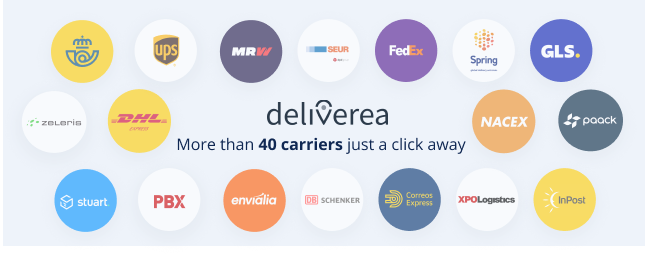In the dynamic world of logistics and supply chain management, optimizing carrier selection is key to staying competitive and maximizing efficiency. If you’ve been postponing the addition of new carriers to your network, now is the time to do it. In this article we will walk you through the steps of implementing new carriers and giving you a timeline to ensure it goes smoothly and successfully.
What can you find in this article?
Why Implement New Carriers?
In today’s market, where demand for shipping services is rising and operational budgets are tight, diversifying your carrier options can give you:
- Enhanced Flexibility: Having a diverse network of carriers allows you to adapt to fluctuating demand and market conditions more effectively.
- Cost Optimization: Competition among carriers can lead to better pricing and more favorable contract terms, reducing overall transportation costs.
- Improved Service Levels: Different carriers may specialize in specific regions or delivery modes, enabling you to provide faster and more reliable service to your customers.
Carrier Implementation Timeline
To ensure a successful carrier implementation, it’s essential to create a structured timeline that adapts to your business. Here’s a breakdown of the key steps and timeframes, according industry specialist Nate Skiver:
➡️ To start now:
- Identify volume segments: analyze your shipping data to identify high-volume segments and potential areas for improvement.
- Prepare parcel data: gather comprehensive data on your parcel shipments, including volumes, destinations, and service requirements.
- Engage with carriers: reach out to potential carriers and express your interest in exploring partnership opportunities.
- Provide carriers your data: share relevant shipment data with interested carriers to facilitate pricing discussions and service evaluations.
- Receive the initial pricing: get initial pricing proposals from selected carriers based on the provided data.
- Outline your tech requirements: assess your technology infrastructure and identify any necessary upgrades or integrations to support new carrier integrations.
➡️ The next 2 months:
First month
- Narrow potential carriers to add to your network: evaluate pricing proposals, service offerings, and contractual terms from different carriers to identify the best transportation partners for your business.
- Complete negotiations and contracts with the new carriers: finalize negotiations with selected carriers and formalize agreements through contracts or service level agreements (SLAs).
Second month:
- Complete implementation: work closely with your chosen carriers to implement necessary systems, processes, and training to ensure a seamless transition.
➡️ What comes after:
Focus on your other priorities: with carrier implementation complete, shift your focus back to other strategic initiatives and priorities to optimize and improve your operations.Optimization Tips
- Monitor continuously: monitor carrier performance metrics, such as on-time delivery rates and customer satisfaction scores regularly, to identify areas for improvement.
- Create a feedback loop: maintain open communication channels with your carriers to address issues quickly and implement corrective actions as needed.
- Review your data: leverage shipment data and Delievera’s analytics tools to identify cost-saving opportunities, route optimization strategies, and demand forecasting insights.
Through this timeframe and steps, you can successfully add new carriers and grow your transport network. Deliverea shortens your implementation timeline with carriers and helps you optimize your multi-carrier strategy and the management of your shipments.
Need help diversifying your carrier catalog? We have more than 40 carriers already on our platform.
Did you like this article? Share it on your social media!



